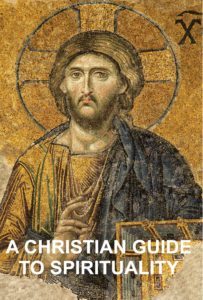Stephen W. Hiemstra's Blog, page 103
September 21, 2021
Hamaker on Sibling Rivalry
 Sarah Hamaker. 2014. Ending Sibling Rivalry: Moving Your Kids from War to Peace. Kansas City: Beacon Hill Press.
Sarah Hamaker. 2014. Ending Sibling Rivalry: Moving Your Kids from War to Peace. Kansas City: Beacon Hill Press.
Review by Stephen W. Hiemstra
Let’s be honest. Most of us were not prepared to be parents. As someone wise once said: parenting is a job that is mostly learned by doing and when you get the hang of it, it’s over. Sibling rivalry is part of that mysterious process that is both frustrating and enigmatic. When Sarah told me that she was writing a book on sibling rivalry, I was more than a bit curious.
IntroductionWhy is sibling rivalry important? Siblings are surprisingly important—our first and longest running relationships are with our siblings. Eighty percent of us have them (12). How we relate with our siblings (or not) accordingly affects how we deal with just about everyone else. If anger management and conflict resolutions skills are not learned in the family context, chances are good that they will not be learned at all. If they are learned in the context of family, then chances are good that a lifetime of benefits will accrue (22).
Family civility cannot be assumed. As Hamaker reminds us, the first stories in the bible of siblings, do not end well. Cain murders his brother, Abel; Jacob rips his brother, Esau, off; Joseph gets sold into slavery by his brothers (19-22). Biblical failures need not be our failures!
Focus of BookAn experienced parent herself, Sarah focuses on moving beyond conflict. She offers parents both things to think about and ideas to implement. For example, she asks parents to develop a mission statement for their kids. She says: if someone asked you to describe each of your children as age thirty, what would you say? (24) She observes that most parents asked this question respond, not with a list of achievements (education, jobs, status symbols …), but with character traits (compassionate, Godly, hardworking…) If this is what we want to see in our grown children, then how to do work to instill these qualities when they are young? (25).
OrganizationHamaker writes Ending Sibling Rivalry in 10 chapters, preceded by acknowledgments and an introduction and followed by conclusions and chapter notes. The chapters are:
The Importance of Getting Along;Thinking the Best, Not the Worst;Competition;Comparison/Favorites;Separate and Unequal (Fairness);The Blessings of Siblings;Conflict Resolution;One-on-One Time;Breathing Room; andIntroducing New Siblings (7).Sarah is not just an experienced parent; she is also a certified leadership parenting coach. She also blogs on parenting issues (www.ParentCoachNOVA.com). I know her as a leader in the Capital Christian Writers club (www.CapitalChristianWriters.org).
My own kids are now all college graduates. Yet, the scars of sibling rivalry are still obvious—if you know where to look. When Sarah asks: Have you ever looked at your kids fighting and seen an opportunity for personal growth? (105) I can honestly say: no, never. But, I wish that I had.
Sarah’s discussion of Matthew 7:1-5, 18:15-16, and 7:12 points to my weakness as a teacher of biblical principles to my children. Although I did, in fact, teach my kids the golden rule (Matthew 7:12), my own lack of focus in bible knowledge came across in my parenting. I taught my kids to read from children’s bibles, but did not focus on the particular lessons that might have critically aided their development—like conflict resolution—the focus of these particular verses.
AssessmentHamaker’s Ending Sibling Rivalry is readable and includes results of her own parent survey. If you are a parent of young kids or even teens, it is definitely worth taking a look.
Footnotes“Judge not, that you be not judged. For with the judgment you pronounce you will be judged, and with the measure you use it will be measured to you. Why do you see the speck that is in your brother’s eye, but do not notice the log that is in your own eye? Or how can you say to your brother, ‘Let me take the speck out of your eye,’ when there is the log in your own eye? You hypocrite, first take the log out of your own eye, and then you will see clearly to take the speck out of your brother’s eye. (Matthew 7:1-5 ESV)
“If your brother sins against you, go and tell him his fault, between you and him alone. If he listens to you, you have gained your brother. But if he does not listen, take one or two others along with you, that every charge may be established by the evidence of two or three witnesses. (Matthew 18:15-16 ESV)
“So whatever you wish that others would do to you, do also to them, for this is the Law and the Prophets. (Matthew 7:12 ESV)
Hamaker on Sibling RivalryAlso see:Friedman Brings Healing by Shifting Focus from Individuals to the Family Books, Films, and MinistryOther ways to engage online:Author site: http://www.StephenWHiemstra.netPublisher site: http://www.T2Pneuma.com Newsletter: https://bit.ly/Urn_2021
The post Hamaker on Sibling Rivalry appeared first on T2Pneuma.net.
September 20, 2021
Exercise: Monday Monologues (podcast) September 20, 2021

By Stephen W. Hiemstra
This morning I will share a prayer and reflect on Exercise as a spiritual discipline. After listening, please click here to take a brief listener survey (10 questions).
To listen, click on this link.
Hear the words; Walk the steps; Experience the joy!
Exercise: Monday Monologues (podcast) September 20, 2021
Also see:
Monday Monologue On March 26, 2018
Other ways to engage online:
Author site: http://www.StephenWHiemstra.net,
Publisher site: http://www.T2Pneuma.com.
Newsletter: https://bit.ly/Urn_2021
The post Exercise: Monday Monologues (podcast) September 20, 2021 appeared first on T2Pneuma.net.
September 19, 2021
Prayer Day 43
By Stephen W. Hiemstra
Almighty Father,
We praise you for the gift of life. Walk with us on the beach in the morning.
Run with us through peaceful cornfields in the night.
Swim with us as we exercise bodies and minds.
In the power of your Holy Spirit, transform us into your people.
In Jesus’ precious name, Amen.
Prayer Day 43
Also see:
Believer’s Prayer
Other ways to engage online:
Author site: http://www.StephenWHiemstra.net
Purchase Book: http://www.T2Pneuma.com
Newsletter: https://bit.ly/Urn_2021
The post Prayer Day 43 appeared first on T2Pneuma.net.
Oración Dia 43

Por Stephen W. Hiemstra
Padre Todopoderoso,
Te alabamos por el don de la vida.
Camina con nosotros por la playa en la mañana.
Corre con nosotros a través de los campos de maíz en la noche.
Nada con nosotros mientras ejercitamos nuestros cuerpos y nuestras mentes.
En el poder del Espíritu Santo, transfórmanos en Tu pueblo.
En el nombre precioso de Jesús oramos. Amén.
Oración Dia 43
Ver también:
Prefacio de La Guía Cristiana a la Espiritualidad
Otras formas de participar en línea:
Sitio del autor: http://www.StephenWHiemstra.net
Comprar Libro: http://www.T2Pneuma.com
Boletín informativo: https://bit.ly/Construct_2021
The post Oración Dia 43 appeared first on T2Pneuma.net.
Gebetstag 43

Vor Stephen W. Hiemstra
Allmächtiger Vater,
Wir loben dich für das Geschenk des Lebens.
Gehe morgens mit uns am Strand spazieren.
Lauf mit uns durch friedliche Maisfelder in der Nacht.
Schwimme mit uns, während wir Körper und Geist trainieren.
Verwandle uns in der Kraft deines Heiligen Geistes in dein Volk.
In Jesu kostbarem Namen, Amen.
Gebetstag 43
Siehe auch:
Einleitung auf Ein Christlicher Leitfaden zur Spiritualität
Andere Möglichkeiten, sich online zu engagieren:
Autoren Seite: http://www.StephenWHiemstra.net
Herausgeber Seite: http://www.T2Pneuma.com
Mitteilungsblatt: https://bit.ly/Construct_2021
The post Gebetstag 43 appeared first on T2Pneuma.net.
September 17, 2021
Why Exercise?

Flee from sexual immorality. Every other sin a person commits is outside the body, but the sexually immoral person sins against his own body. Or do you not know that your body is a temple of the Holy Spirit within you, whom you have from God? You are not your own, for you were bought with a price. So glorify God in your body. (1 Cor 6:18–20)
By Stephen W. Hiemstra
Which spiritual discipline should I focus on?
Sin distracts and separates us from God. The spiritual disciplines of highest value target sins to which we, as Americans, are especially vulnerable—sexual immorality and gluttony. Both are sins against the body.
Where Does Sin Begin?
Jesus is clear when he says that sin begins in the heart. On the question of adultery, he says: “everyone who looks at a woman with lustful intent has already committed adultery with her in his heart.” (Matt 5:28) This statement is immediately followed by hyperbole about chopping off body parts that lead to sin [1]. This transition from heart to body is an example of how the body and mind are unified [2].
Unity of Body, Mind, and Spirit
The best example of the unity of body and mind applied to spiritual disciplines is found in Henri Nouwen’s book, Reaching Out. Nouwen describes our spiritual journey as a unity of three dimensions—reaching inward to ourselves; reaching outward to others; and reaching upwards to God. In ourselves, we move from being lonely to becoming content in solitude. With our relationships with others, we move from hostility to hospitality. In our relationship with God, we move from illusion to prayer (Nouwen 1975, 15). The paradox of this unity in three dimensions is that progress in one dimension makes progress in the others easier.
Spiritual Movements
This linkage of spiritual progress in different dimensions is especially important in dealing with sins of the body. Sins against the body invariably involve mild to severe addictions—obsessive behaviors that we repeatedly engage in. When we allow ourselves our “little indulgences”, they spread to other aspects of our life. Bad behaviors turn into bad habits that turn into bad lifestyles. Undertaking a “fast” in vulnerable areas of our lives can nip bad behaviors early in the process. Gerald May (1988, 177) writes: “It all comes down to quitting it, not engaging in the next addictive behavior, not indulging in the next temptation.” Physical discipline, accordingly, works to cleanse the whole system.
Why exercise?
The simple answer is because your body is the temple of God. We are under obligation to ourselves and to God to keep our temple clean. A more nuanced answer is that the physical disciplines grant us strength to discipline other, less obvious, areas of our lives. The body and the mind are inseparable—physical exercise is a kind of beach assault on our island of sin [3]. Beach assaults, like the one on Iwo Jima during the Second World War [4], are risky but the payoff is huge. Ironically, when we exercise we often exhibit less interest in food, alcohol, even tobacco because we are more relaxed and self-confident.
Assessment
In clinical pastoral education we were taught to look for dissidence between words and the body language of patients that we visited. This disharmony between words and body language is, of course, a measure of truth. In like manner, the biblical paradigm of beauty is that the truth of an object matches its appearance [5]. Did I mention that body and mind are closely bound together?
Footnotes
[1] I wonder, which body part is really in view here?
[2] Macchia (2012, 104) writes: “Your personal rule of life is formatted and reflected in your . . . physical priorities (the care and training of your body, mind, and heart).”
[3] Reynolds (2012), who writes almost exclusively on a biblical perspective on weight-loss, notes that the first sin in the Bible is a temptation involving food (Gen 3:1–6).
[4] Japan is a family of islands. In February 1945, United States amphibious forces landed on the Japanese island of Iwo Jima. There they engaged the Japanese military in one of the bloodiest battles during the war.
[5] “Our modern images feature surface and finish; Old Testament images present structure and character. Modern images are narrow and restrictive; theirs were broad and inclusive…For us beauty is primarily visual; their idea of beauty included sensations of light, color, sound, smell, and even taste” (Dyrness 2001, 81).
References
Dyrness, William A. 2001. Visual Faith: Art, Theology, and Worship in Dialogue. Grand Rapids, MI: Baker Academic.
Macchia, Stephen A. 2012. Crafting a Rule of Life: An Invitation to the Well-Ordered Way. Downers Grove: IVP Books.
May, Gerald G. 1988. Addiction and Grace: Love and Spirituality in the Healing of Addictions. New York: HarperOne.
Nouwen, Henri J. M. 1975. Reaching Out: The Three Movements of the Spiritual Life. New York: DoubleDay.
Reynolds, Steve and MG Ellis. 2012. Get Off the Couch: 6 Motivators to Help You Lose Weight and Start Living. Ventura: Regal.
Why Exercise?
Also see:
Preface to A Christian Guide to Spirituality
Other ways to engage online:
Author site: http://www.StephenWHiemstra.net
Purchase Book: http://www.T2Pneuma.com
Newsletter: https://bit.ly/Construct_2021
The post Why Exercise? appeared first on T2Pneuma.net.
¿Por Qué Ejercicios?

Huyan de la fornicación. Todos los demás pecados que un hombre comete están fuera del cuerpo, pero el fornicario peca contra su propio cuerpo. ¿O no saben que su cuerpo es templo del Espíritu Santo que está en ustedes, el cual tienen de Dios, y que ustedes no se pertenecen a sí mismos? (1 Cor 6:18-19 NBH)
Por Stephen W. Hiemstra
¿Cuál de las disciplinas espirituales yo debiera centrarse en?
Los pecados distraen y separan nos de Dios. Las disciplinas espirituales de lo más valor enfoquen por pecados los que nosotros somos especialmente vulnerable—inmoralidad sexual y gula. Ambos son pecados contra el cuerpo.
Jesús es claro cuando él dice que los pecados empieza en la corazón. Por la pregunta de adultera, él dice: “Pero Yo les digo que todo el que mire a una mujer para codiciarla ya cometió adulterio con ella en su corazón.” (Matt 5:28 NBH) Esta declaración se sigue inmediatamente por hipérbole sobre cortando ciertas partes del cuerpo que siguiere a los pecados [1]. Esta transición de corazón a cuerpo es una ejemplo de como el cuerpo y la mente están unificado [2].
Lo mejor ejemplo de la unidad del cuerpo y la mente se aplica a las disciplinas espiritual se encuentra en el libro de Henri Nouwen: Reaching Out (Alcanza a cabo). Nouwen describe nuestro camino espiritual como una unidad de tres dimensiones—alcance hacia el interior de nosotros mismo; alcanza hacia fuera a los demás; y alcanza hacia arriba a Dios. Adentro de nosotros mismo, nos movemos desde la soledad de convertirse en contenido en la soledad. En nuestra relaciones con los demás, nos movemos de hostilidad a hospitalidad. En nuestra relaciones con Dios, nos movemos de ilusión a oración (Nouwen 1975, 15). La paradoja de esta unidad en tres dimensiones es que progreso en una dimensión hace que el progreso en los demás más fácil.
Esta vinculación del progreso espiritual en las dimensiones diferente es importante especialmente en el trato con pecados del cuerpo. Los pecados contra el cuerpo invariablemente implican leves a graves adicciones—comportamientos obsesivo que nos involucramos en repetidas ocasiones. Si permitimos nuestros “indulgencias pequeñas”, se extendió a otros aspectos de nuestra vida. Los comportamientos males convierten a hábitos malos que convierten en estilos de vida malo. A ayuna en áreas vulnerables de nuestras vidas pueden cortar los comportamientos malos al principio del proceso. Gerald May (1988, 177) escribe: “Todo se reduce a dejar de fumar que, no participar en la próxima comportamiento adictivo, no caer en la próxima tentación.” [3] Por esta razón, la disciplina física obra a limpiarse toda la sistema.
¿Por qué ejercicios? La respuesta fácil es porque tu cuerpo es el templo de Dios. Somos bajo un obligación a nosotros mismo y a Dios a mantener nuestro templo limpia. Una respuesta más sofisticado es que las disciplinas físicas nos otorgan la energia a disciplinar otras, menos obvio áreas de nuestras vidas. El cuerpo y la mente son inseparables—ejercicios física es una especie de asalto playa de las isla de nuestros pecados [4]. Invasiones de playas, como la invasión en Iwo Jima durante las Guerra Mundial Segunda [5], son riesgosas pero la recompensa es enorme. Es irónico extrañamente que cuando ejercitamos que frecuentemente demostramos menos interés en alimentos, alcohol, aun tabaco porque somos mas relajado y seguro de sí mismo.
En mi clase de cuidado pastoral [6], nos enseñaron que buscar por disidente entre las palabras y la lenguaje corporal de las pacientes que visitamos. Esta desharmonia entre las palabras y lenguaje corporal es, naturalmente, una medida de la verdad. Por lo mismo manera, la paradigma bíblica de belleza es que la verdad de un objeto coincide su aparición” [7]. ¿Me menciono que el cuerpo y la mente están estrechamente vinculado juntas?
[1] Me pregunto: ¿cual parte de cuerpo es realmente enfoque aquí?
[2] Macchia (2014, 104) escribe: “Su regla de la vida personal es formado y se reflecta en su . . . Prioridades físicas (el cuido y formando de su cuerpo, mente, y corazón).” [“Your personal rule of life is formed and reflected in your . . . physical priorities (the care and training of your body, mind, and heart).”]
[3] “It all comes down to quitting it, not engaging in the next addictive behavior, not indulging in the next temptation.”
[4] Reynolds (2012), quien escribe casi exclusivamente por una perspectiva bíblica de la pérdida de peso, observa que el primer pecado en la Bíblica es una tentación que involucra alimentos (Gen 3:1-6).
[5] Japón es una nación de islas. En Febrero 1945, las esfuerzas anfibias de los Estadios Unidos desembarcaron en la isla Japones de Iwo Jima y lucharon con la militaría Japones durante una batía que era una de los más sangriento de la guerra.
[6] Educación Pastoral Clínica [Clinical Pastoral Education]
[7] Nuestras imagines modernas enfoquen por superficie y acabado; Las imágenes del Testamento Antiguo presentan estructura y carácter. Las imágenes modernas son estrecha y restrictiva; ellos eran amplia y inclusivo . . . Para nosotros la belleza es principalmente visual; su idea de belleza incluyeron sensaciones de luz, color, olor, y también aun sabor” [“Our modern images feature surface and finish; Old Testament images present structure and character. Modern images are narrow and restrictive; theirs were broad and inclusive…For us beauty is primarily visual; their idea of beauty included sensations of light, color, sound, smell, and even taste”] (Dyrness 2001, 81).
Referencias
Dyrness, William A. 2001. Visual Faith: Art, Theology, and Worship in Dialogue. Grand Rapids, MI: Baker Academic.
Macchia, Stephen A. 2012. Crafting a Rule of Life: An Invitation to the Well-Ordered Way. Downers Grove: IVP Books.
May, Gerald G. 1988. Addiction and Grace: Love and Spirituality in the Healing of Addictions. New York: HarperOne.
Nouwen, Henri J. M. 1975. Reaching Out: The Three Movements of the Spiritual Life. New York: DoubleDay.
Reynolds, Steve and MG Ellis. 2012. Get Off the Couch: 6 Motivators to Help You Lose Weight and Start Living. Ventura: Regal.
¿Por Qué Ejercicios?
Ver también:
Prefacio de La Guía Cristiana a la Espiritualidad
Otras formas de participar en línea:
Sitio del autor: http://www.StephenWHiemstra.net
Comprar Libro: http://www.T2Pneuma.com
Boletín informativo: https://bit.ly/Urn_2021
The post ¿Por Qué Ejercicios? appeared first on T2Pneuma.net.
Warum Trainieren?

Vor Stephen W. Hiemstra
Flieht die Hurerei! Alle Sünden, die der Mensch tut, sind außerhalb seines Leibes; wer aber Hurerei treibt, der sündigt am eigenen Leibe. Oder wisst ihr nicht, dass euer Leib ein Tempel des Heiligen Geistes ist, der in euch ist und den ihr von Gott habt, und dass ihr nicht euch selbst gehört? Denn ihr seid teuer erkauft; darum preist Gott mit eurem Leibe. (1 Cor. 6:18-20)
Auf welche spirituelle Disziplin sollte ich mich konzentrieren?
Sünde lenkt ab und trennt uns von Gott. Die spirituellen Disziplinen von höchstem Wert zielen auf Sünden ab, für die wir als Amerikaner besonders anfällig sind—sexuelle Unmoral und Völlerei. Beides sind Sünden gegen den Körper.
Jesus ist klar, wenn er sagt, dass Sünde im Herzen beginnt. Zur Frage des Ehebruchs sagt er: “Wer eine Frau ansieht, sie zu begehren, der hat schon mit ihr die Ehe gebrochen in seinem Herzen.” (Matt 5:28) Auf diese Aussage folgt unmittelbar eine Hyerbei über das Abhacken von Körperteilen, die zur Sünde führen. Dieser Übergang vom Herzen zum Körper ist ein Beispiel dafür, wie Körper und Geist vereint sind (Macchia 2012,104).
Das beste Beispiel für die Einheit von Körper und Geist in spirituellen Disziplinen findet sich in Henri Nouwens Buch Reaching Out. Nouwen beschreibt unsere spirituelle Reise als eine Einheit von drei Dimensionen—die nach innen zu uns selbst reichen; nach außen zu anderen greifen; und nach oben zu Gott greifen. In uns selbst bewegen wir uns vom einsamen sein zum zufriedenen sein in der Einsamkeit. In unseren Beziehungen zu anderen bewegen wir uns von Feindseligkeit zu Gastfreundschaft. In unserer Beziehung zu Gott bewegen wir uns von der Illusion zum Gebet (Nouwen 1975, 15). Das Paradox dieser Einheit in drei Dimensionen ist, dass der Fortschritt in einer Dimension den Fortschritt in den anderen erleichtert.
Diese Verbindung des spirituellen Fortschritts in verschiedenen Dimensionen ist besonders wichtig im Umgang mit Sünden des Körpers. Sünden gegen den Körper beinhalten ausnahmslos leichte bis schwere Süchte—zwanghafte Verhaltensweisen, die wir wiederholen. Wenn wir uns unsere “kleinen Genüsse“ gönnen, breiten sie sich auf andere Bereiche unseres Lebens aus. Schlechtes Verhalten wird zu schlechten Gewohnheiten, die sich in einen schlechten Lebensstil verwandeln.
Ein “Fasten“ in gefährdeten Bereichen unseres Lebens kann schlechtes Verhalten früh im Prozess unterbinden. Gerald May (1988, 177)1 schreibt: “Alles läuft darauf hinaus, damit aufzuhören, sich nicht auf das nächste Suchtverhalten einzulassen, sich nicht der nächsten Versuchung hinzugeben.“ Körperliche Disziplin arbeitet dementsprechend, um das gesamte System zu reinigen.
Warum trainieren? Die einfache Antwort ist, dass deiner Körper der Tempel Gottes ist. Wir sind uns selbst und Gott verpflichtet, unseren Tempel sauber zu halten. Eine differenziertere Antwort ist, dass uns die körperlichen Disziplinen die Kraft geben, andere, weniger offensichtliche Bereiche unseres Lebens zu disziplinieren. Körper und Geist sind untrennbar—körperliche Bewegung ist eine Art Strandangriff auf unsere Insel der Sünde (Reynolds 2012). Strandangriffe, wie der auf Iwo Jima während des Zweiten Weltkriegs, sind riskant, aber die Auszahlung ist enorm. Es ist seltsam ironisch, dass wir beim Sport oft weniger Interesse an Essen, Alkohol oder sogar Tabak zeigen, weil wir entspannter und selbstbewusster sind.
In der klinischen pastoralen Ausbildung wurde uns beigebracht, nach Dissidenz zwischen Worten und der Körpersprache der Patienten, die wir besuchten, zu suchen. Diese Disharmonie zwischen Worten und Körpersprache ist natürlich ein Maß an Wahrheit. In ähnlicher Weise ist das biblische Paradigma der Schönheit, dass die Wahrheit eines Objekts seiner Erscheinung entspricht (Dyrness 2001, 81). Habe ich schon erwähnt, dass Körper und Geist eng miteinander verbunden sind?
VerweiseDyrness, William A. 2001. Visual Faith: Art, Theology, and Worship in Dialogue. Grand Rapids, MI: Baker Academic.
Macchia, Stephen A. 2012. Crafting a Rule of Life: An Invitation to the Well-Ordered Way. Downers Grove: IVP Books.
May, Gerald G. 1988. Addiction and Grace: Love and Spirituality in the Healing of Addictions. New York: HarperOne.
Nouwen, Henri J. M. 1975. Reaching Out: The Three Movements of the Spiritual Life. New York: DoubleDay.
Reynolds, Steve and MG Ellis. 2012. Get Off the Couch: 6 Motivators to Help You Lose Weight and Start Living. Ventura: Regal.
Fußnoten1 “It all comes down to quitting it, not engaging in the next addictive behavior, not indulging in the next temptation.”
Warum Trainieren?Siehe auch: Einleitung auf Ein Christlicher Leitfaden zur Spiritualität Andere Möglichkeiten, sich online zu engagieren:Autoren Seite: http://www.StephenWHiemstra.net Herausgeber Seite: http://www.T2Pneuma.com Mitteilungsblatt: https://bit.ly/Urn_2021The post Warum Trainieren? appeared first on T2Pneuma.net.
September 14, 2021
Younger: Judges and Ruth

K. Lawson Younger, Jr. 2002. The NIV Application Commentary: Judges/Ruth. Grand Rapids: Zondervan.
Review by Stephen W. Hiemstra
Commentaries are important to our faith. Commentaries provide the lens through which we understand scripture either through personal study or the preaching that they are exposed to. When I am not teaching, I read commentaries devotionally.
The author of the Book of Judges famously writes: In those days there was no king in Israel. Everyone did what was right in his own eyes (Judges 17:6 ESV). Sound familiar? Not coincidentally, the postmodern period is also characterized by this same characteristic—an extreme focus on equality. Other focuses are possible. Tension between different groups in society over the rights of individuals and the rights of the community highlight, in part, change in the values held most dearly [1]. The focus on individual initiative in the Book of Judges speaks to the moral challenge of our own time [2]. By contrast, the Book of Ruth paints a picture of faithfulness and God’s providence in the midst of otherwise chaotic and desperate lives.
Younger describes the purpose of the Book of Judges as: the consequences of disobedience to God with the resultant moral degeneration that characterized the history of this period (23). A judge was more of a tribal leader rather than a government official in charge of deciding legal matters as we might think of a judge (22). Leadership was less formal, more charismatic. The book ends on the period of the judges were the death of Joshua and the coronation of King Saul—a period of no more than 400 years (24). Ruth, being the great grandmother of King David (Ruth 4:17), also lived during this period.
The structure of the Book of Judges aids in observing the moral degeneration of both the judges and the people. Younger notes the following cycle being repeated throughout the accounts:
1. Israel does evil in the eyes of Yahweh;
2. Yahweh gives/sells them into the hands of oppressors;
3. Israel serves the oppressor for X years;
4. Israel cries out to Yahweh;
5. Yahweh raises up a deliverer (i.e. judge);
6. The spirit of Yahweh is upon the deliverer;
7. The oppressor is subdues;
8. The land has “rest” for X years (35).
In reviewing the particular judges, Younger notes that over time the judges were increasingly ignorant of God and his covenant, and increasingly prone to idolatry. The two most famous judges, Samson and Gideon, therefore exemplify this trend showing serious personal flaws. The book speaks not of their suitability as role models, but of God’s forbearance and love.
Perhaps of most interest to a contemporary audience are the roles of Deborah and Jael, both women. In a male dominated society, both women assume roles normally reserved for men, in part, to highlight the degeneration of the men, in this case, Barak and Sisera (138-146). Younger makes the point that rather than setting Deborah and Jael up as role models, the author of Judges uses them as a foil to highlight the degeneration of the men. Elevation of the women does fill the gap created by responsibility-avoiding men, but it is not the author’s focus.
Much more could be said about the Book of Judges—especially in view of contrary opinions. However, in a short review it is more interesting to turn to the Book of Ruth. Ruth is a stark contrast to the Book of Judges.
The key verse in the Book of Ruth highlights the transformative power of faith:
But Ruth said, Do not urge me to leave you or to return from following you. For where you go I will go, and where you lodge I will lodge. Your people shall be my people, and your God my God. (Ruth 1:16 ESV)
Through faith and fidelity to God’s law even an immigrant woman from Moab living in Israel finds protection under God’s providential care. God later acts through her faithfulness to bring about both the Kingship of David and the redemption of Jesus himself. The Book of Ruth accordingly displays the faithful remnant in Israel that transforms the nation itself during a general period of decline and degeneracy.
The themes outlined in the Younger study deserve more attention. The usual treatment of the judges and of the characters in Ruth as heroes of the faith fails to capture the subtly of the actual stories. Younger paints a more realistic picture—one that informs our own times.
[1] Most professionals, for example, are trained to value objectivity most dearly—the dominant value held in the modern period. In the feudal period loyalty was the highest value. At any given point, the priority placed on these values may differ among social groups.
[2] The NIV Application Commentary has been my default commentary over the past decade because the series takes the narrative of scripture seriously. Once I am acquainted with an orthodox interpretation, I can judge a book from other dimensions. I have taught from the series the Books of Romans, Luke, Genesis, Revelations, John, Matthew, Galatians, and 1 & 2 Corinthians (I may have forgotten some books). The series takes seriously John Stott’s division of the homiletical task into 3 things: the author’s context (original meaning), the reader’s context (contemporary significance), and the need to bridge the two (bridging contexts).
ReferencesJohn Stott. 1982. Between Two Worlds: The Challenge of Preaching Today. Grand Rapids: Eerdmans.
Younger: Judges and RuthAlso see:Books, Films, and MinistryOther ways to engage online:Author site: http://www.StephenWHiemstra.netPublisher site: http://www.T2Pneuma.com Newsletter: https://bit.ly/Urn_2021
The post Younger: Judges and Ruth appeared first on T2Pneuma.net.
September 13, 2021
Daily Prayer: Monday Monologues (podcast) September 13, 2021

By Stephen W. Hiemstra
This morning I will share a prayer and reflect on Daily Prayer. After listening, please click here to take a brief listener survey (10 questions).
To listen, click on this link.
Hear the words; Walk the steps; Experience the joy!
Daily Prayer: Monday Monologues (podcast) September 13, 2021
Also see:
Monday Monologue On March 26, 2018
Other ways to engage online:
Author site: http://www.StephenWHiemstra.net,
Publisher site: http://www.T2Pneuma.com.
Newsletter: https://bit.ly/Urn_2021
The post Daily Prayer: Monday Monologues (podcast) September 13, 2021 appeared first on T2Pneuma.net.




